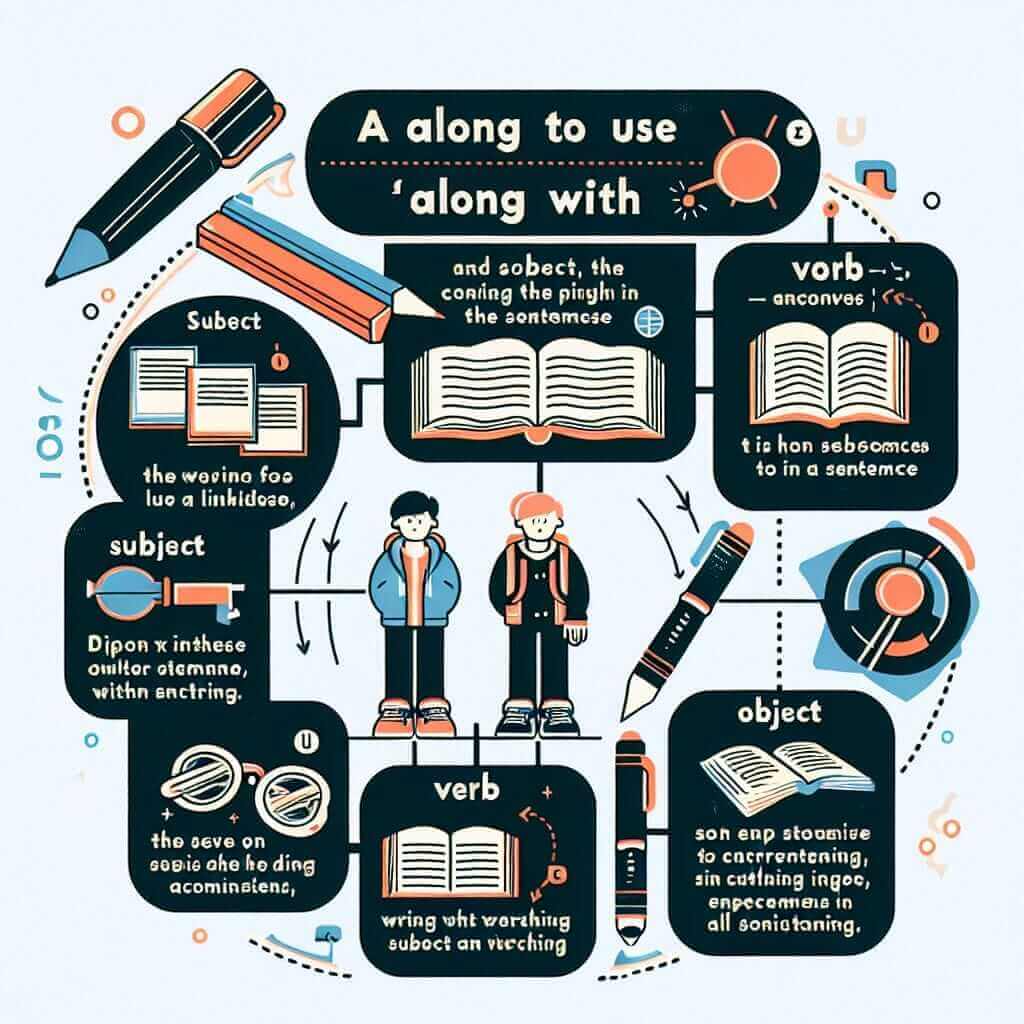“Along with” is a preposition that often trips up IELTS test-takers. While it seems simple enough, understanding its grammatical nuances and how to use it effectively in your speaking and writing can significantly impact your band score. This comprehensive guide will delve deep into the meaning, usage, and common errors associated with “along with,” providing you with the knowledge and confidence to ace your IELTS exam.
Let’s start by looking at how “along with” functions in a sentence:
Speaking (Part 2 – Describe a person):
“My older brother, along with his bandmates, often practices in our garage. It can get quite loud!” – Here, “along with” introduces additional subjects performing the action, emphasizing their collective practice.
Writing (Task 1 – Describing trends):
“The consumption of sugary drinks, along with fast food, has seen a dramatic increase over the past decade.” – In this context, “along with” highlights a parallel trend, linking the increase in fast food consumption with that of sugary drinks.
Writing (Task 2 – Opinion Essay):
“Governments, along with international organizations, have a crucial role to play in tackling climate change.” – “Along with” clarifies the shared responsibility between governments and organizations in addressing the issue.
Understanding “Along With” in IELTS
Meaning and Usage:
“Along with” signifies accompaniment or addition. It’s used to indicate that someone or something is in the company of another or that something is being added to something else. This preposition is particularly helpful when you want to highlight a connection or a shared characteristic between different elements.
Frequency in IELTS:
While not as common as some other prepositions, “along with” appears frequently enough in both the Speaking and Writing sections of the IELTS exam to warrant a thorough understanding. Recognizing and using it correctly can demonstrate your grasp of grammatical range and accuracy, ultimately contributing to a higher band score.
Grammar Rules and Application:
Formula and Grammatical Points:
[Noun/Noun phrase 1] + along with + [Noun/Noun phrase 2] + [Verb] + [Object (if any)]
Example:
Tourism, along with hospitality, plays a vital role in the country’s economy.
Breakdown:
- “Tourism” and “hospitality” are the two noun phrases being linked.
- “Along with” connects them, highlighting their combined impact.
- “Plays” is the verb agreeing in number with the first noun phrase (“Tourism”). This is crucial: the verb should always agree with the subject that comes before “along with.”
- “a vital role” is the object of the verb “plays.”
- “in the country’s economy” acts as a prepositional phrase modifying the object.

Applying “Along with” in Different IELTS Sections:
Speaking: When describing people, places, or experiences, “along with” can add detail and fluency to your responses. For instance, instead of saying, “My friends went to the concert. I also went,” you could say, “I went to the concert, along with my friends,” which sounds more natural and sophisticated.
Writing Task 1: In describing data or processes, “along with” can help you present information more concisely and effectively, especially when showing connections between different trends.
Writing Task 2: When expressing your opinions or presenting arguments, using “along with” can demonstrate your ability to connect different ideas and present a more nuanced perspective.
Aiming for Band 7+
Using “along with” effectively can showcase your grammatical range and accuracy. To achieve a higher band score:
- Vary your language: Don’t overuse “along with.” Consider synonyms like “in addition to,” “as well as,” or “coupled with” to add variety to your writing.
- Ensure subject-verb agreement: Pay close attention to the verb form after using “along with.” Remember, the verb agrees with the noun that comes before “along with.”
- Use it strategically: Don’t just throw “along with” into your writing or speaking. Use it purposefully to connect ideas, highlight relationships, and add sophistication to your language.
Common Errors and How to Avoid Them:
-
Incorrect Subject-Verb Agreement:
- Incorrect: The students, along with the teacher, is going on a field trip.
- Correct: The students, along with the teacher, are going on a field trip.
Explanation: The verb should agree with the subject before “along with” (“students”), not the noun phrase after it.
-
Redundancy:
- Redundant: The government, along with the citizens, they need to work together.
- Concise: The government, along with the citizens, needs to work together.
Explanation: Avoid using redundant pronouns after “along with.” The initial subject (“government”) already encompasses the added noun phrase (“the citizens”).
Conclusion:
Mastering the use of “along with” might seem like a small step, but it can make a significant difference in your IELTS band score. By understanding its meaning, grammatical rules, and how to use it effectively, you can enhance your writing and speaking, showcasing a wider range of vocabulary and grammatical accuracy. Remember to practice using “along with” in various contexts, and pay close attention to subject-verb agreement to avoid common mistakes. With consistent effort, you’ll be well on your way to achieving your desired IELTS results.